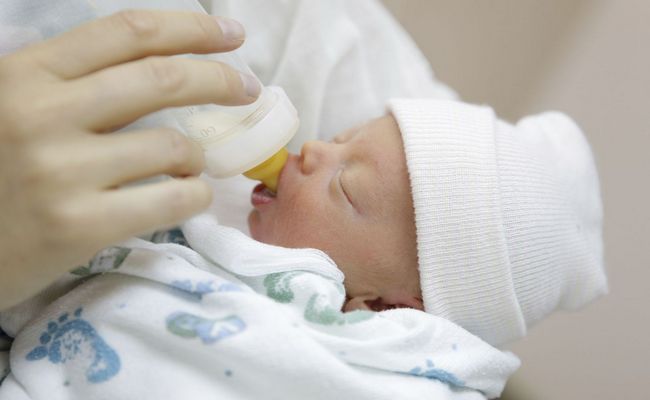Artificial Feeding Or Bottle Feeding: Details Discussion
What is Artificial Feeding Or Bottle Feeding?
The term “artificial or bottle feeding” is implied to the condition when a baby is completely deprived of mother’s milk due to some maternal or other causes and the entire dietary demand of the baby is met from sources of food except mother’s milk. In another article, I have discussed the advantages and disadvantages of breastfeeding.

Principles of Artificial Feeding:
The nutritional needs of the baby should be kept in view during planning an artificial feed. There are as follows:
- An average energy requirement of an infant is 100 kcal/kg/day; i.e. about 150ml of milk per kg of body weight per day.
- The protein requirement is about 2gm/kg daily during the first 6 months, it declines to about 1.5gm/kg daily by the end of one year. According to this, 13-14gm protein daily is given during the first year of life. In terms of calories, 8 to 10% of calories are given as protein.
- The carbohydrate requirement is about 100gm/kg/daily.
- After the age of 4 months, undiluted boiled and cooled milk should be given.
- Infants need feeding at frequent intervals about 68 times daily; older babies 5 times daily.
- Calorie requirement is increased during illness, e.g. fever and it should be met.
What are the Indications of Artificial Feeding?
Indications of artificial feeding have presented the below:
- Cessation of breast milk secretion,
- Diseases of breast,
- Prolonged illness of the mother or death of the mother,
- When the infant is intolerant to lactose,
- When the mother is getting the anticancer drug,
- Working mother.
Disadvantages of Artificial Feeding or Bottle Feeding:
All the disadvantages of artificial feeding have listed in the following:
- Inadequate supply (Inappropriate proportion),
- Mistakes in proportion,
- Infections (gastroenteritis) due to E.coli, shigella, salmonella, etc.,
- Neonatal tetany,
- Hyperosmolality and hypernatraemia,
- Obesity,
- Malnutrition,
- Cow’s milk allergy,
- Infantile eczema.
What are the Substitutes of Breast Milk?
Substitutes of human breast milk include-
- Dried whole milk powder,
- Cow’s milk,
- Goat’s milk (In case of intolerance to cow’s milk),
- Vegetable milk is made from soybean.
How to Sterilize Bottles for Artificial Feeding or Bottle Feeding?
Method of sterilization of bottle has presented in the below:
- The bottle should be rinsed with warm water to remove the traces of fat and with cold water to remove milk particles.
- The bottle should be cleaned with a brush.
- No soap or detergents to be used.
- The cap, nipple, and bottle should be separated and kept in boiling water for 10 minutes.
- The bottle should be sterilized every time before feeding.
More questions related to this article:
- What is bottle feeding?
- List all the indications of artificial feeding or bottle feeding.
- What are the principles of artificial feeding?
- Present the methods of bottle feeding or artificial feeding.
- List the disadvantages of artificial feeding in infants.
- List the best breast milk substitute for newborns.
- Present the sterilization process of plastic containers for artificial feeding.

Maria Khatun Mona is a Founder and Editor of Nursing Exercise Blog. She is a Nursing and Midwifery Expert. Currently she is working as a Registered Nurse at Evercare Hospital, Dhaka, Bangladesh. She has great passion in writing different articles on Nursing and Midwifery. Mail her at “maria.mona023@gmail.com”
